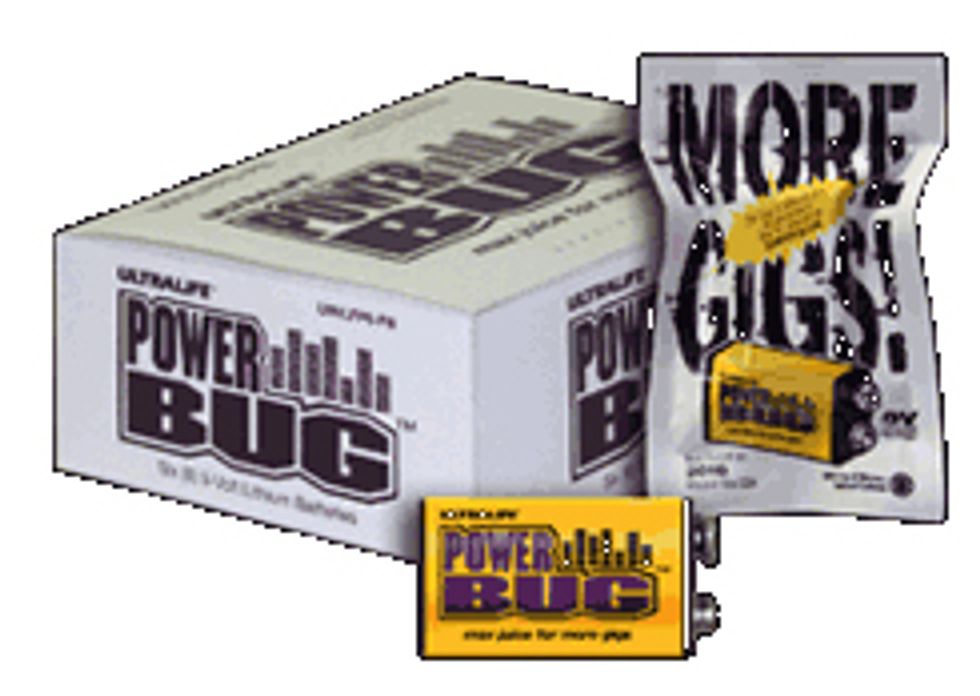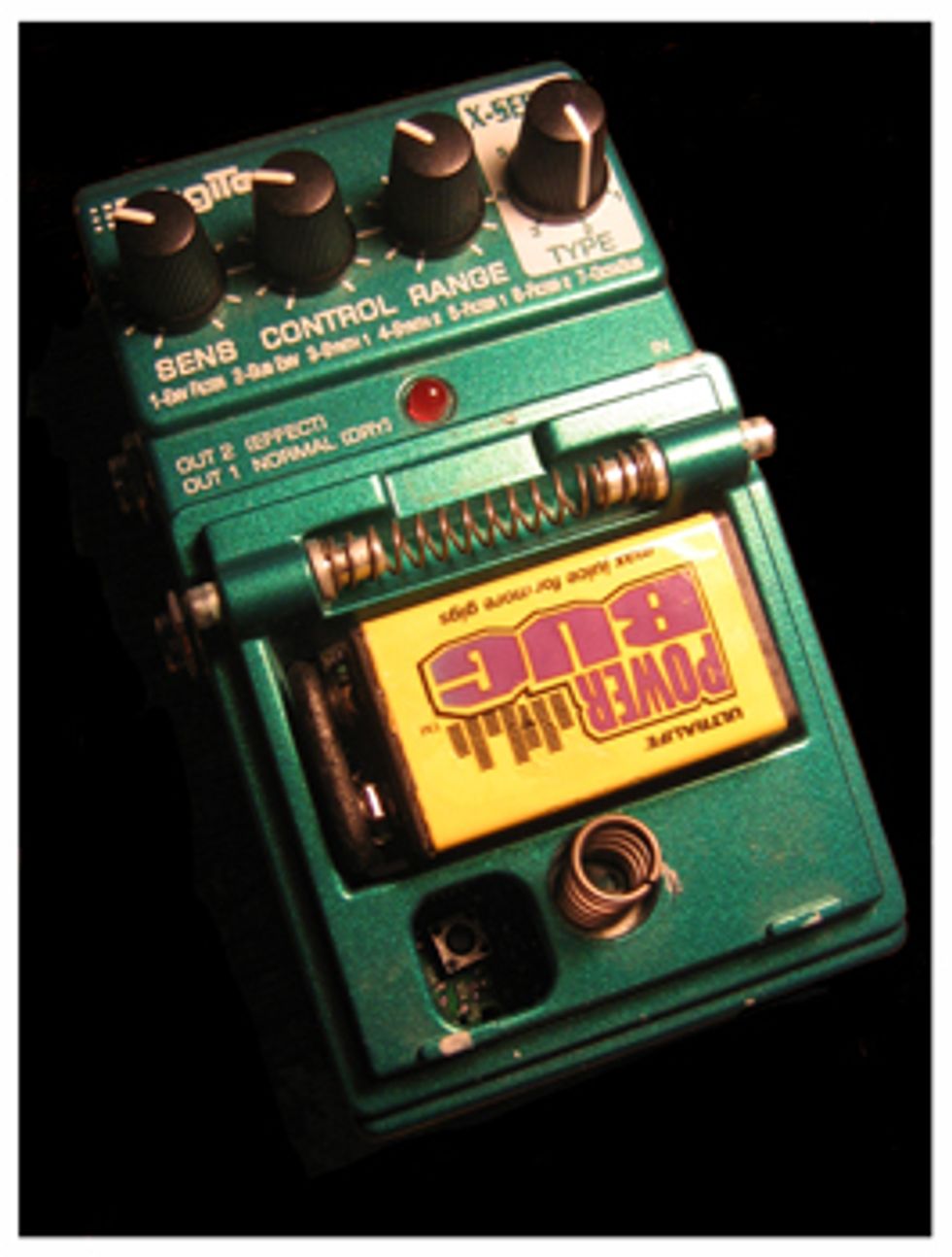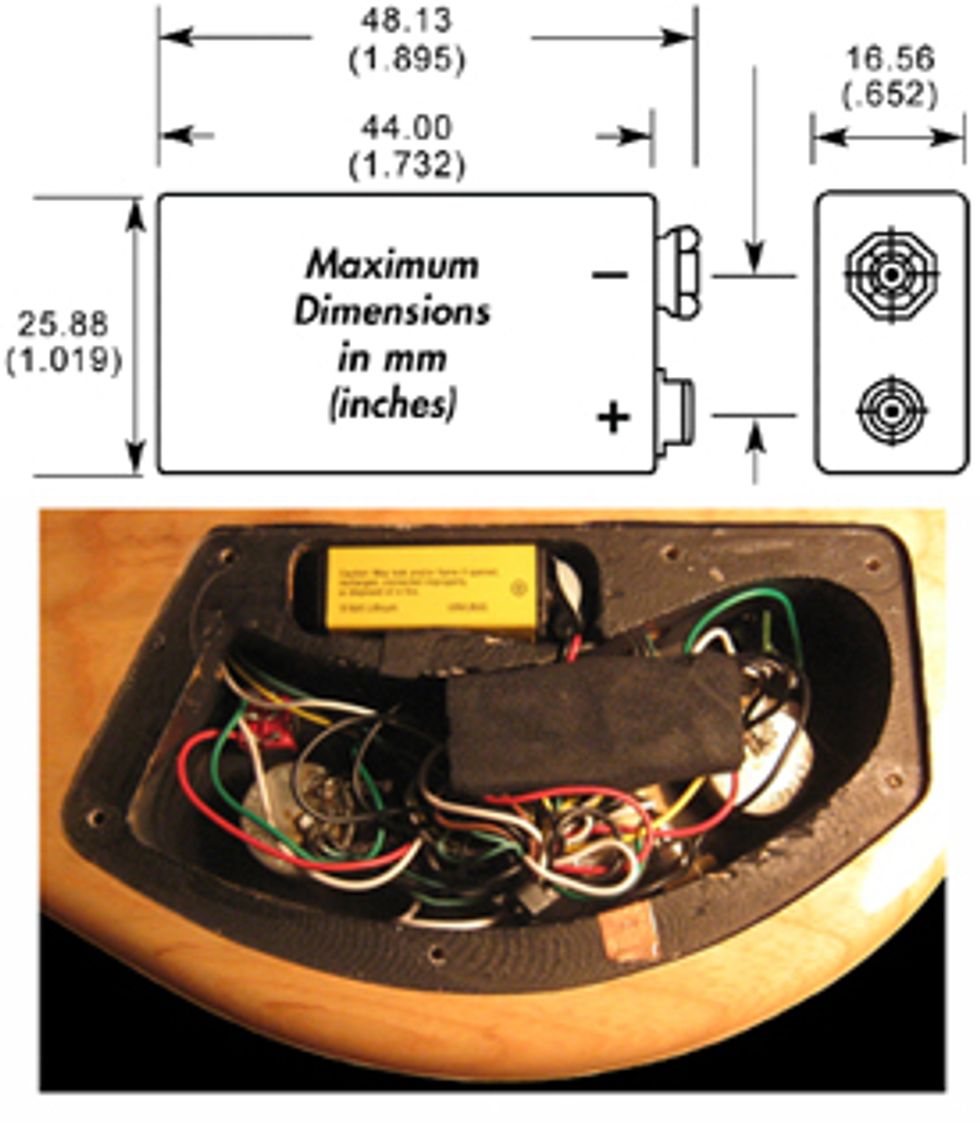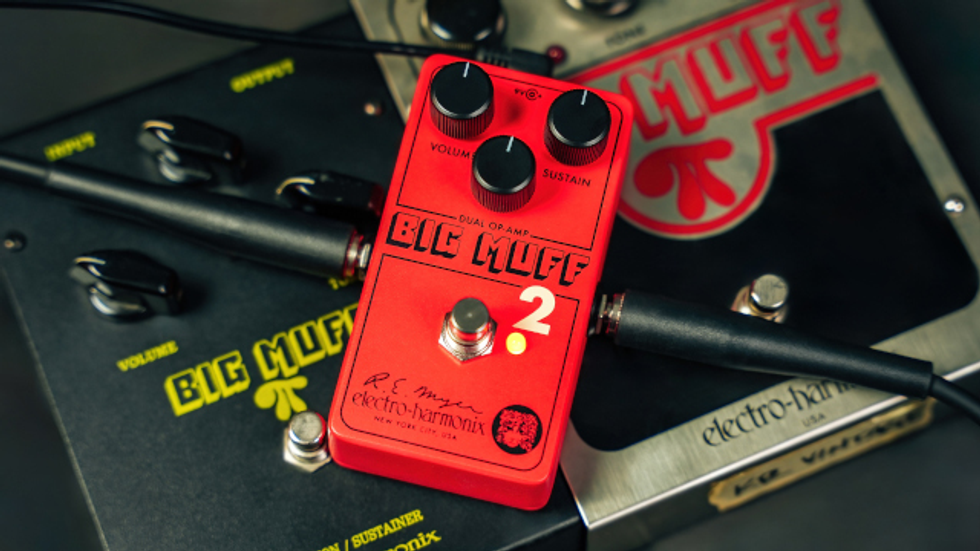A battery? They want me to write a review of a battery? I had to stop a moment and make sure I wasn’t imagining things. At this rate, I’d soon be writing a review of pickguard screws. Nonetheless, I agreed to take on what seemed like folly for even the ultimate gearhead.
Digging into the PowerBug promo materials I discovered they’re endorsed by the likes of gonzo guitarist Ted Nugent and bass phenom Stu Hamm. Supposedly, players with active instruments really dig PowerBugs because they last a long time – that means more gigs between battery changes. They’re also supposed to have more peak power – especially important when a preamp is running off 9 rather than 18 volts. Considering the important yet unheralded role a battery can play in a musician''s life, performing longer and better becomes a pretty big deal.So lemme at ‘em.
First Glance
Each PowerBug battery comes in a little plastic pouch that proclaims, “MORE GIGS!” on the front and back. You can only buy them via online from the folks that make them.
The manufacturer, Ultralife Batteries, says the PowerBug has up to five times the staying power of regular alkaline batteries. That, certainly, would be one of my tests. Another claim is cleaner headroom. Of that, I was skeptical but that would be easy to test. For my last test I wanted to see if these batteries would fit, literally. I’d read on a couple of discussion boards that the PowerBug was slightly bigger than a normal battery and might not fit in a really tight battery box like the kind you see in active guitars and bases.
According to the Ultralife website, two things give PowerBugs their increased zip. First, lithium 9 volt batteries have three larger rectangular cells inside them while alkaline batteries have six smaller ones. That means PowerBugs have more room for the goo that creates the juice. Second, lithium batteries are characteristically different to begin with. They tend to provide a longer draw and can handle more short bursts. That’s why they’re often used in pacemakers and digital cameras. They’re not a fancy manufacturing trick involving the same old 9-volt guts; lithium batteries are an entirely different beast.
Test #1 -- Battery Life
To test the staying power of the PowerBug, I took one to a gig and stuck it in my Digitech Bass Synth Wah, which is famous for killing batteries. It uses a lot of juice to convert a signal into a funky, quacking sound. The Synth Wah can kill a normal battery midway through gig.
Right out of the pouch, the Powerbug registered 9.9 volts on my voltmeter. Most 9 volt batteries begin life at 9.2 or so. I checked a second PowerBug… and got the same result!
I kept the Synth Wah pedal plugged in for the entire gig. Normally, that’s enough to put a battery down. Not the Powerbug, though; after a three hour gig (plus set up), it was still going strong.
Test #2 -- More Headroom?
The PowerBug website has a nice graph that compares the output of the battery with the outputs of conventional alkaline batteries. Another graph shows sine waves for the voltage curve of the two kinds of batteries. Bottom line? The PowerBug is supposed to help your gear sound cleaner because it puts out the juice when it’s needed.
That’s exactly what I heard, too.
Usually, the big downside of my Bass Synth Wah is that the first notes I play on the G string tend to produce a bit of crunch before settling in. That might be fine for a guitarist, but on bass, breaking up is generally a bad thing. Making things worse for that little green pedal, my main bass these days is a G&L Tribute L-2500. It’s a five string bass with really hot humbucking pickups and a preamp to make its output even hotter (it uses a 9 volt, too, but that’s Test #3).
Anyway, by the time I finished my solo on “Chain of Fools,” I realized like something was missing – the crunch was gone. “No way,” I thought. A battery is a battery. A crunch is a crunch. I probably just wasn’t listening closely enough. Then came “The Same Love that Made me Laugh” and I started the song off by vamping the signature riff. Again, no crunch. I still wasn’t convinced that a simple battery could do that, but allowed for the possibility.
Sanity Check
The next day, I had to plug in and check if I had been hearing things – err, not hearing things.
Voila – still no crunch. What’s more, my voltmeter registered nearly 9.1 volts. Not bad!
Those claims of a better battery must be for real. Maybe that’s why the PowerBug website shows 50, count ‘em, 50 endorsing artists. Maybe that’s why artist after artist on the PowerBug website testifies that these little gems make their lives easier and their tones cleaner.
Yes, it’s hard to believe that a battery can make a difference. When something sounds too good to be true, it’s not supposed to be true. But that just wasn’t the case here – the PowerBug was delivering what it promised!
Test #3 -- The Size Issue
Okay, so PowerBugs last longer and give you more headroom. But what good is that if you can’t use them? Remember, the PowerBug’s physical dimensions are a bit different from that of an ordinary battery. I still had to test that out, too.
Long battery life is important when you play an active instrument. However, if your active instrument lacks easy access to the battery, as is the case with my G&L, battery life is even more important. Scampering after loose screws that are bouncing all over a dimly-lit stage is no fun, trust me.
In a daring move and in the private security of my own home, I removed those six little screws from the back of my bass, fished out the old battery, clipped in a PowerBug – and it fit!
Except for the six screws, changing batteries might not be as big of a challenge with a G&L. The tone controls are passive, with no boost circuits, so the power draw is low and the battery doesn’t need changing very often. I’d guess the PowerBug I installed will keep gigging for a year with hardly a drop in voltage.
So, yes, the PowerBug might be just a bit different in size and shape, something that has apparently come into play for some people, but at least in my two tests – a pedal and a bass – the battery fit, no problem.
But…Can You Afford Them?
The Ultralife folks sell Powerbugs in a box of six – shipped – for $29.94. If their longevity claim really gets five times the life, then let’s see. 30 dollars divided by six is five. Five divided by five is, um, one.
That’s the equivalent of about a buck a battery, plus you don’t have to mess around with changing them as often.
Keep in mind that battery life depends not just on how long it’s used, but on the intensity of your gear’s demands as well (think of the power use difference between a desk clock and a camera flash). Even if your application only gets twice the battery life from the PowerBug, you’re still ahead – one less battery change to mess with.
Ultralife Batteries
“Powerbug"Lithium 9 Volt Battery
$29.94 for one box (6 batteries)
$27.84 per box (when ordering 9 boxes or more)
PowerBug.com
Our expert has stated his case, now we want to hear yours. Log on to premierguitar. com, click on “Forum” and share your comments and ratings.












![Rig Rundown: Russian Circles’ Mike Sullivan [2025]](https://www.premierguitar.com/media-library/youtube.jpg?id=62303631&width=1245&height=700&quality=70&coordinates=0%2C0%2C0%2C0)














